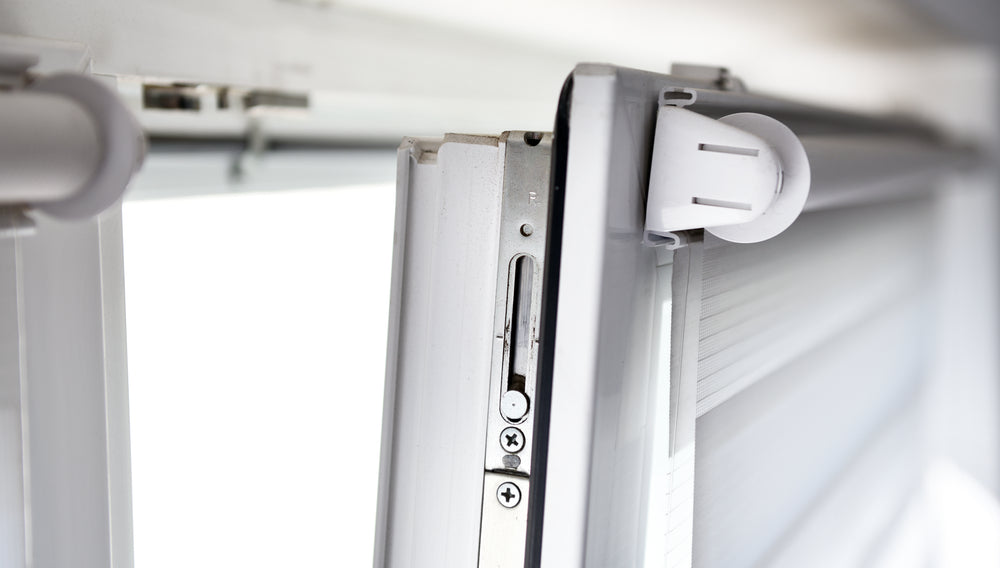5 Types of Window Hardware You Should Know About

Window hardware is an essential part of window installation and repair. There are many different types of window hardware on the market that offer varying levels of security, style, and performance. Here are five types of window hardware our team at Paddington Hardware believes everyone homeowner should know about.
What are the Different Types of Windows?
Before we explore the various types of window hardware and all the styles of furnishings on offer, it helps to first have a better understanding of the different options for windows available:
Single & Double-Hung Windows
Single and double-hung windows are some of the most popular type of windows used in residential homes. Double-hung windows have both an upper and lower sash that slide up and down on a track to allow air circulation, while single options offer only one operable sash with the other fixed in place.
Casement Windows
Traditional casement windows open outward with the use of a stay to fix it open in a range of positions. These traditional casements are usually hinged on one side of the window, allowing them to be opened beyond 90 degrees. Modern casement windows are often hinged with pairs of friction stays, which restrict the opening angle to less than 90 degrees. The use of friction stays alleviates the need for traditional casement stays and hinges.
They offer superior ventilation compared to other types of windows due to their ability to fully open horizontally, providing maximum airflow into your home. Additionally, these windows are incredibly easy to clean since they open completely outwards, allowing you to access all sides from outside.
Awning Windows
Awning windows open outwards on the bottom and are hinged at the top, perfect for outdoor areas requiring ventilation and protection from the elements. They also offer excellent insulation against wind and rain, while still allowing air circulation through their sashes.
Stationary Windows
Stationary windows don’t open in any way and are typically used as decorative pieces or to provide additional light into a room without creating an opening for outside air to enter. These windows can be placed above doors or between two other operable types of windows, such as casement or double-hung windows.
Sliders
As the name suggests, slider windows ‘slide’ open horizontally, allowing for maximum ventilation and easy access to the outside of your home. They are an ideal choice when you don’t have enough room for a casement or double-hung windows.
Fanlight Windows
Fanlight windows are smaller, hinged windows that are typically elliptical or rectangular in shape. They are placed above doors or other operational windows, like double-hung windows, to provide additional light into a room while maintaining privacy.
Bay Windows
Bay windows feature three panels that extend outwards from the home, creating an alcove-like area inside the interior wall space. The central panel is usually fixed in place, while the two side panels can be operational or fixed. Bay windows are great for bringing more natural light into your home and creating an open feel to the room.
Window Sashes to a Casement Window Latch: Understand the Main Types of Window Hardware
Window Sashes
Window sashes are the main components surrounding the glass and keeping it in place within the frame. This type of hardware is necessary to ensure your windows open as intended and remain securely in place. They come in various sizes and materials, such as wood or metal frames. Window sashes can be further equipped with additional hardware like locks, latches, hinges and tilt-out mechanisms for easy cleaning.
Traditional sash windows use a combination of counterbalance weights and pulleys to open the windows in a vertical movement. Two sash lifts allow the window to be lifted up while a sash drop is typically used to hold the window open. Modern sash or hung windows typically utilise a sash balance, removing the requirement for pulleys and counterbalance weights. Sash or spiral balances are designed specifically for each window based on size and weight and allow the window to remain open in any position without the need for sash drops. Sash or hung windows typically require sash window or fitch fasteners which fasten both windows together preventing them from moving vertically in either direction.
Casement Window Fastener
A casement window fastener is used to secure the window shut when it’s not in use. These fasteners come in a range of styles and are usually available in a standard or long throw variant. The long throw variant is designed for banks of casement windows, where the tongue latches onto the next casement window in the bank. The standard throw variant is best suited for the last window of the bank, latching into the window frame.
Casement Window Stay
A casement window stay is another type of hardware used to keep your window open and secure in place while you're ventilating a room. The stay attaches to the side of the frame and holds the sash firmly in place when it’s opened, giving you greater control over airflow.
Cremone Bolts
Lastly, cremone bolts are a type of lock that provides extra security for your windows. They consist of two tightly fitted rods that run inside a single handle at the top and bottom of the frame. When turned, they simultaneously disengage multiple latches along the side of the frame, allowing you to open or close it with ease from either side. This makes cremone bolts an ideal choice for rooms where additional security is needed or for those who want more control over their windows.
To learn more on our window hardware available, please contact us at Paddington Hardware today.



 07 3369 6588
07 3369 6588 Sign in
Sign in